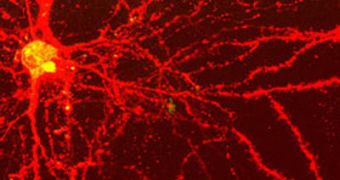Despite decades of research, scientists have not yet been able to come up with efficient drugs to treat conditions of the neurons associated with the loss of myelin insulation, such as multiple sclerosis and diabetic neuropathy. One of the main difficulties in this line of research is the availability of test material, as in the actual compromised neurons. Now, a group of investigators from the University of Central Florida (UCF) have created the first fully functional batch of artificially grown neurons in the laboratory, with functions and organizational patterns identical to those of neurons in the human brain.
The motor nerves can be constituted in a system model, which researchers looking into myelin insulation loss could then use to test various new treatment options for these conditions, which are debilitating, and sometimes even fatal. They occur when structures in the neurons, called the nodes of Ranvier, are malfunctioning. These nodes usually chemically boost the electric signal, allowing it to travel to the next node, and so on, at very high speeds. “They're like power station relays,” the lead researcher of the new study, UCF Bioengineer James Hickman, explains.
Hickman also says that it's very frustrating for researchers to continue performing this type of highly sensitive investigations in animal models, which are close to the human complexity, but not that much so at the same time. “People have basically been stuck doing work in animal models, and they don't work very well,” he adds. With the new model, experts can keep on eye on the motor neurons, and identify the exact causes that lead to neural demyelinization.
The new model was already used to re-myelinate motor neurons within the peripheral nervous cell system. Schwann cells are responsible for doing this in the human body, and the researchers were able to make them do the same thing in artificial conditions. All that remains now is for Hickman and collaborator John Rumsey, a UCF graduate student, to find a way of making oligodendrocytes (cells that re-myelinate cells in the central nervous system) do the same inside the brain.
“It was exciting because it was totally unexpected. It was such a long shot I didn't believe the results at first. It took two months before I was convinced we had what he had,” the expert says of the moment when the team first found out it had developed a sustainable nerve cell model for demyelinization research.
More details of the new model can be found here.

 14 DAY TRIAL //
14 DAY TRIAL //